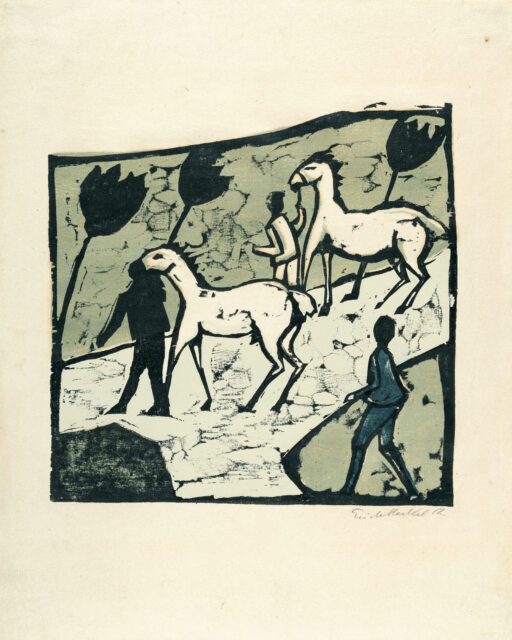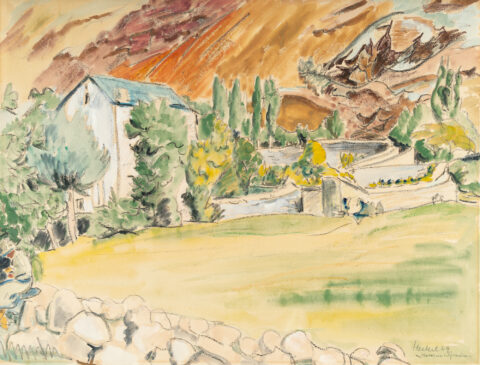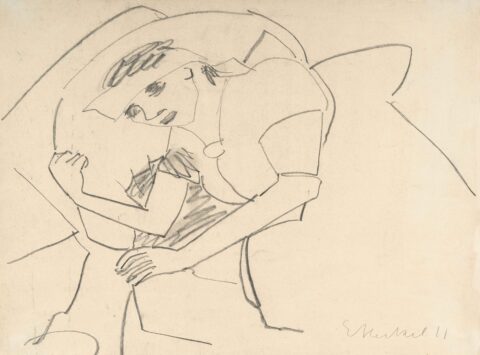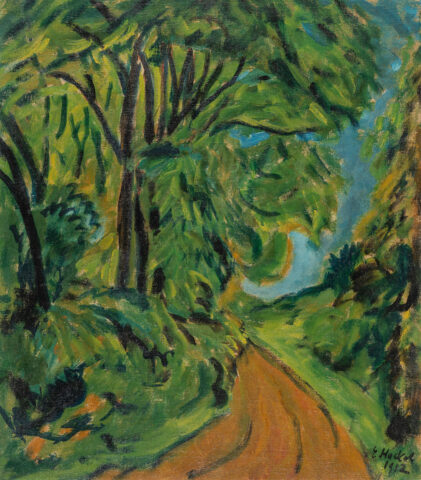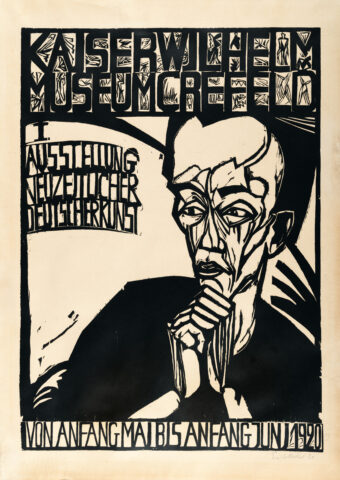
White horses
Details
Published by Verlag I.B. Neumann, Berlin. Dube H 242 b1 IV (of IV); Ebner/Gabelmann 531 H b1 III (of III). Literature: Sabarsky, Serge (ed.), Graphik des deutschen Expressionismus, Stuttgart/Munich 1991, cat. no.82, with col. illus. p. 119. Exhibitions: From Kandinsky to Dix. Paintings of the German Expressionists, Nassau County Museum of Art, Roslyn, New York 1989; Graphik des deutschen Expressionismus, Neuer Sächsischer Kunstverein, Dresden et. al. 1991-1993, cat. no.82; Erich Heckel – Die frühen Jahre. Zeichnungen, Aquarelle, Graphik, Städtische Galerie, Bietigheim-Bissingen/Stadt Rosenheim 1995, p. 93; Neue Galerie, Museum for German and Austrian Art, New York, Dauerausstellung 2009-2013. Provenance: Lafayette Parke Gallery, New York; collection of/estate of Serge Sabarsky, New York, acquired from the aforementioned in 1986; collection of/Foundation Vally Sabarsky, New York.
Descrizione
• One of the most important prints of German Expressionism
• Each copy has a unique character thanks to the individual monotype-like colouring
• The motif is considered a symbolic fusion of the two revolutionary artist groups Brücke and Der Blaue Reiter Erich Heckel’s woodcut “White Horses” is undisputedly one of the masterpieces of Expressionist printmaking .
The sheet illustrates Heckel’s great skill in depicting an unusually dynamic scene in a medium as cumbersome as woodcut. The artist was inspired by the theme of people and horses fighting strong winds during his summer stay on the Baltic Sea island of Hiddensee in 1912. The motif of the horses in combination with the three figures, which was unusual for Heckel, can be interpreted as a momentary fusion of the ideas of two revolutionary groups of artists: Die Brücke and Der Blaue Reiter. Heckel met the Blaue Reiter artists, who had come to Berlin for an exhibition of their works, in 1912 after moving there from Dresden in 1911. A friendship developed between him and Franz Marc, which led to repeated encounters and a lively exchange of letters. After printing the black block, the coloured areas were added with a second printing block. The colours, applied with a brush like a monotype, create the impression of hand colouring and vary from sheet to sheet.
* Tutte le informazioni includono la commissione a carico dell'acquirente (27%) senza IVA e senza garanzia. Salvo errori.
** Tutte le informazioni più la commissione a carico dell'acquirente e l'IVA e senza garanzia. Salvo errori.
*** Con riserva: L'offerta è stata accettata al di sotto del limite. L'acquisizione dell'opera potrebbe essere ancora possibile nella nostra vendita post-asta.
R = Le opere d'arte regolarmente tassate
N = Opere d'arte soggette a tassazione differenziata e provenienti da un paese non UE
Non è consentita la riproduzione e la distribuzione privata o commerciale di tutte le illustrazioni delle opere esposte nell'archivio della mostra e dell'asta. Tutti i diritti riservati.


